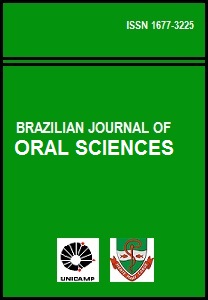Abstract
Aim: To evaluate the post-treatment and long-term anteroposterior and vertical maxillary changes from the use of Kloehn cervical headgear in treated skeletal Class II Division 1 malocclusion. Methods: Using a longitudinal prospective study design, 90 lateral radiographs of 30 treated patients (12 male gender and 18 female gender) were taken at the beginning of the treatment (mean age = 10 years and 9 month), at the end of the treatment (mean age = 14 years and 6 months), and in the post-retention phases (mean age = 26 years and 2 months). Lateral radiographs of 30 adults patients with Class II malocclusion, as control group (mean age = 24 years and 1 month) were compared with lateral radiographs of patients in the post-retention phase in order to quantify the cephalometric measurements (5 angular and 2 linear) representing the maxillary position in the anteroposterior and vertical direction. Results: Under the effect of treatment, forward displacement of the maxilla was redirected in a downwards and backwards direction. When the means of the female measurements were compared between the two groups, only ANB was greater in the control group. When the male measurements were compared, they presented a mean value of ANB greater in the control group, and the mean of SNPP greater in the treated group. Conclusions: In the post-retention phase, maxillary displacement reverted in a downward and forward direction, confirming the transitory effect of the extra-oral action on maxillary displacement.The Brazilian Journal of Oral Sciences uses the Creative Commons license (CC), thus preserving the integrity of the articles in an open access environment.
Downloads
Download data is not yet available.

